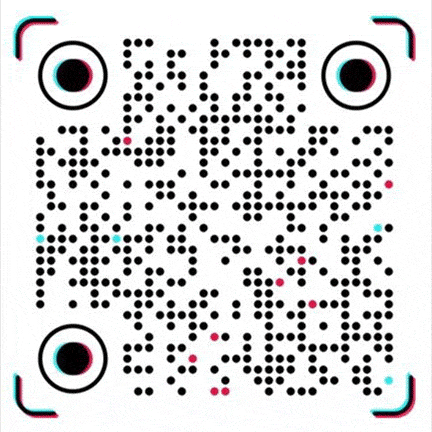How PET Powers Closed-Loop Plastic Recycling
The "bottle-to-bottle" closed-loop recycling process represents the pinnacle of sustainable material management, and PET is the key to the operation of this complex system. The core of the process includes four major links: "collection - cleaning - crushing - regeneration":
Collection and pretreatment: collect waste PET bottles through a complete recycling network, and remove labels, oil stains and other pollutants through high-pressure cleaning;
Physical regeneration process: crush the clean bottle body into millimeter-level flakes (PET flakes), and then convert them into food-grade rPET resin through drying and melt granulation;
Closed-loop cycle realization: new resin is directly used for blow molding to produce new bottles, forming an infinite cycle from "bottle to bottle".
This process does not rely on primary resources such as oil. According to industry data, every ton of rPET used can reduce 2.5 tons of carbon emissions and save 70% of oil consumption, which is equivalent to "reducing carbon" for the earth while "saving oil" by more than 1,500 liters.
PET's unique properties: chemical stability builds the foundation of recycling
The reason why PET is an ideal material for closed-loop recycling lies in its "thermal stability + chemical inertness" double barrier advantages:
Molecular structure stability: PET is polymerized from terephthalic acid and ethylene glycol, forming strong ester bonds between molecular chains, with a melting point of up to 255°C, far exceeding ordinary plastics (such as PE about 120°C), ensuring that it will not degrade after multiple melt regenerations;
Environmental erosion resistance: acid-resistant (such as carbonated beverages), alkali-resistant (such as detergents), and UV-resistant. Even after more than 10 recycling cycles, its tensile strength can still maintain more than 95% of the initial value, while materials such as polypropylene (PP) can only maintain 70% of the performance.
This "new-as-new" characteristic makes it the only recycled plastic that has been certified by the FDA (U.S. Food and Drug Administration) for direct contact with food, providing safety protection for high-demand scenarios such as beverage bottles.
Global recycling infrastructure: underlying support for large-scale application
The closed-loop recycling of PET relies on a mature "policy-industry-technology" collaborative system:
(I) Policy-driven recycling network
Leading model of the European Union: Germany has achieved a 97% PET bottle recycling rate through the "deposit system", and consumers can get a 0.25 euro cashback for each bottle returned;
Marketization path in the United States: California requires beverage bottles to contain 15%-25% rPET, pushing the price of rPET 10%-15% lower than that of virgin materials.
(II) Sorting system with technological upgrades
Near infrared spectroscopy (NIR) sorting: 500 bottles can be identified per second, with an accuracy rate of over 99.5%, and PET can be accurately separated from interfering materials such as PVC and PS;
Breakthrough in chemical recycling: PET is decomposed into monomers and repolymerized to achieve "zero impurity" regeneration, and the cost is 20% lower than traditional physical recycling.
(III) Industrial ecology of economic closed loop
The rPET market presents "double heat of supply and demand": the global demand for rPET will reach 8 million tons in 2023, with an annual growth rate of 12%. Among them, Coca-Cola Company purchases 500,000 tons of rPET each year, which is equivalent to recycling 25 billion beverage bottles.
The dual value of rPET in terms of environment and business
(I) "Green calculator" for carbon emission reduction
Energy consumption comparison: 7.2 kWh of electricity is required to produce 1 kg of virgin PET, while rPET only requires 3 kWh, a reduction of 58%;
Resource substitution effect: The world produces about 50 million tons of PET each year. If all rPET is used, 320 million tons of crude oil consumption can be reduced, which is equivalent to the annual oil demand of 20 million cars.
(II) "Sustainable Label" for Brand Upgrading
Leading companies have incorporated rPET into the core of their ESG strategies:
PepsiCo: The goal for 2025 is to achieve 50% rPET content in its beverage bottles, and launch "fully transparent rPET bottles" to intuitively demonstrate environmental protection commitments to consumers;
Nestlé: Launched 100% rPET bottled water in the European market, with a carbon footprint 80% lower than traditional bottles, and the product premium is 15%-20%, which is still popular.
This positive cycle of "environmental investment - brand value-added" is driving rPET from a "cost item" to a "competitiveness factor".
Existing challenges and solutions
(I) Collection end: the efficiency bottleneck of the “last mile”
Source of the problem: The recycling rate in developing countries is less than 30%. In Southeast Asia and other places, due to the high cost of manual sorting, about 40% of PET bottles flow into the ocean;
Innovative solutions:
Digital tracking: Indian company PET Recycling Co. launched the "Bottle Bank" APP, where users can earn points to redeem goods by scanning the code, increasing the recycling rate by 45%;
Community co-governance model: Kenya has increased the collection rate of PET bottles in rural areas from 12% to 68% through the "Women's Recycling Cooperative".
(II) Recycling end: impurity control and technical cost
Pollution pain point: label adhesives and bottle caps (mostly PP materials) mixed in, resulting in rPET color value (L* value) lower than 85 (food grade requires ≥90);
Technological breakthrough:
Physical cleaning upgrade: Japanese companies use supercritical carbon dioxide cleaning to dissolve adhesives at 31°C and 7.3MPa, increasing cleaning efficiency by 3 times and zero wastewater discharge;
Chemical recycling cost reduction: Loop Industries in the United States has developed low-cost depolymerization technology to make rPET production costs close to virgin materials, and plans to achieve a target price of $1/pound in 2025.
Future Outlook: From "Closed Loop" to "Infinite Loop"
With the implementation of policies such as carbon tariffs (CBAM) and the EU's new plastics regulations, PET closed-loop recycling is changing from an "optional option" to a "corporate rigid demand".
The "plastic recycling revolution" led by PET is essentially to reconstruct the linear economy's "mining - use - discard" model into an infinite cycle of "recycling - regeneration - reuse".
Our platform connects hundreds of verified Chinese chemical suppliers with buyers worldwide, promoting transparent transactions, better business opportunities, and high-value partnerships. Whether you are looking for bulk commodities, specialty chemicals, or customized procurement services, TDD-Global is trustworthy to be your fist choice.















